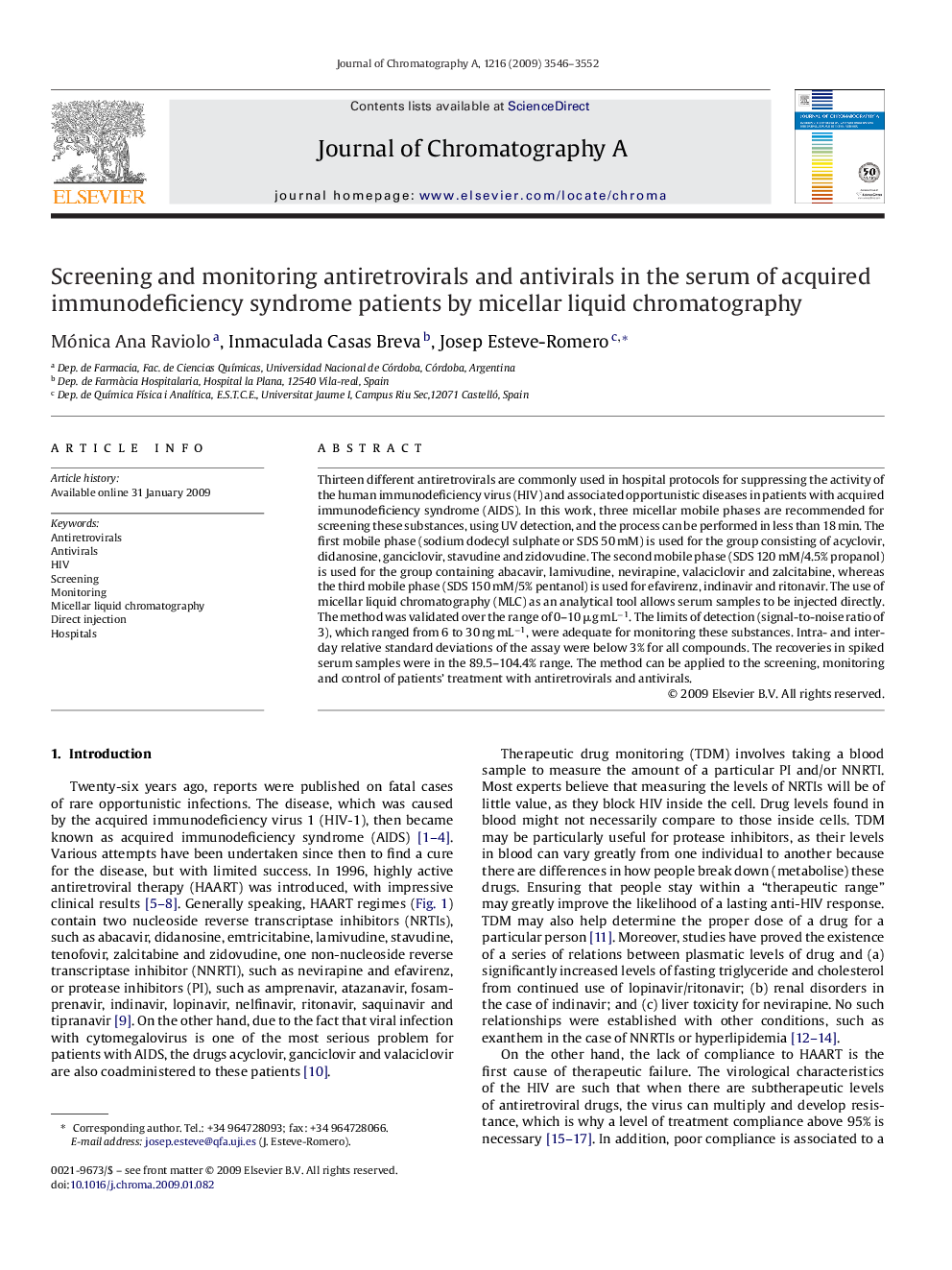| Article ID | Journal | Published Year | Pages | File Type |
|---|---|---|---|---|
| 1206914 | Journal of Chromatography A | 2009 | 7 Pages |
Abstract
Thirteen different antiretrovirals are commonly used in hospital protocols for suppressing the activity of the human immunodeficiency virus (HIV) and associated opportunistic diseases in patients with acquired immunodeficiency syndrome (AIDS). In this work, three micellar mobile phases are recommended for screening these substances, using UV detection, and the process can be performed in less than 18 min. The first mobile phase (sodium dodecyl sulphate or SDS 50 mM) is used for the group consisting of acyclovir, didanosine, ganciclovir, stavudine and zidovudine. The second mobile phase (SDS 120 mM/4.5% propanol) is used for the group containing abacavir, lamivudine, nevirapine, valaciclovir and zalcitabine, whereas the third mobile phase (SDS 150 mM/5% pentanol) is used for efavirenz, indinavir and ritonavir. The use of micellar liquid chromatography (MLC) as an analytical tool allows serum samples to be injected directly. The method was validated over the range of 0-10 μg mLâ1. The limits of detection (signal-to-noise ratio of 3), which ranged from 6 to 30 ng mLâ1, were adequate for monitoring these substances. Intra- and inter-day relative standard deviations of the assay were below 3% for all compounds. The recoveries in spiked serum samples were in the 89.5-104.4% range. The method can be applied to the screening, monitoring and control of patients' treatment with antiretrovirals and antivirals.
Keywords
Related Topics
Physical Sciences and Engineering
Chemistry
Analytical Chemistry
Authors
Mónica Ana Raviolo, Inmaculada Casas Breva, Josep Esteve-Romero,
